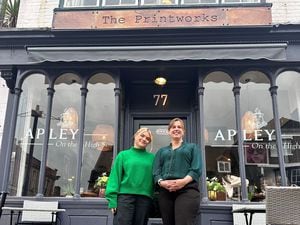West Mids city growth to outpace national average
Economic growth in West Midlands cities such as Wolverhampton is expected to outpace the national average over the next five years, says a new report.

According to research from leading national property adviser, GVA, industrial and distribution sites will remain at the top of most investors' wish lists.
The report, entitled Real Estate - Contributing to Growth in the West Midlands outlines sources of growth in the four main real estate markets which will push activity in Birmingham, Wolverhampton, Coventry and Warwick past expected national levels.
Launched at the West Midlands Forum for Growth conference, for which GVA was a headline sponsor, the report outlines activity in the four main real estate sectors – offices, industrial, residential and retail – and highlights the positive impact that ongoing strong investor appetite will have on the markets.
Jonathan Hillcox, senior director in GVA’s investment team, said: “While some investors have chosen to be more cautious following last year’s European referendum, the anticipated drop in activity that more dolorous commentators were anticipating hasn’t materialised.
“However, the devaluation of sterling following the referendum will continue to ensure that commercial property is an appealing asset for overseas investors, with around 40% of the £1.4 billion of transactions recorded in the first half of 2017 a result of foreign investment.
“While the volume of transactions has fallen from its 2016 peak there is still strong demand from a range of domestic buyers, including private individuals, local authorities and institutional investors. Property values are likely to remain underpinned by rental growth, particularly at the prime end of the market, despite the obvious political and economic uncertainties.”
The industrial and distribution market in particular is likely to remain at the top of many investors’ wishlists as a continued consumer shift towards e-tailing forces changes within the markets and occupiers of secondary assets are keen to ‘trade up’ at lease expiry to more sustainable facilities that maximise their efficiencies and maintain corporate images.
Within the offices sector, availability of top-end prime commercial space in the region remains limited, with roughly 285,000 sq ft or one year’s supply of Grade A stock in Birmingham city centre and vacancy rates in Coventry at their lowest since 2000.
While the uncertain economic climate is likely to hinder speculative development, there is an appreciable uplift in the number of businesses relocating or setting up in the West Midlands generally and Birmingham in particular.
This is driving an anticipated population growth of 4% in the region over the next five years, with significant interest in city centre living partly due to the relocation of HSBC’s new ringfenced bank and headquarters of HS2, at Arena Central and Snow Hill respectively.
The report also outlines 12 regeneration schemes that will have a significant impact on the West Midlands, including Friargate Coventry, Birmingham’s Smithfield and Paradise developments, the UK Central Hub and Stoke-on-Trent city centre.
Ian Stringer, regional senior director for the Midlands at GVA, said: “This is without a doubt one of the most interesting and exciting times for real estate in this region. There is a clear vision in place to ensure the continued growth and prosperity of the West Midlands, driven by Mayor Andy Street, the West Midlands Combined Authority and the Midlands Engine.
“There is a clear understanding of the importance of ensuring that the correct levels and types of real estate are in place to continue attracting inward investment to the region, supporting employment and helping the West Midlands to realise its full economic potential.”





